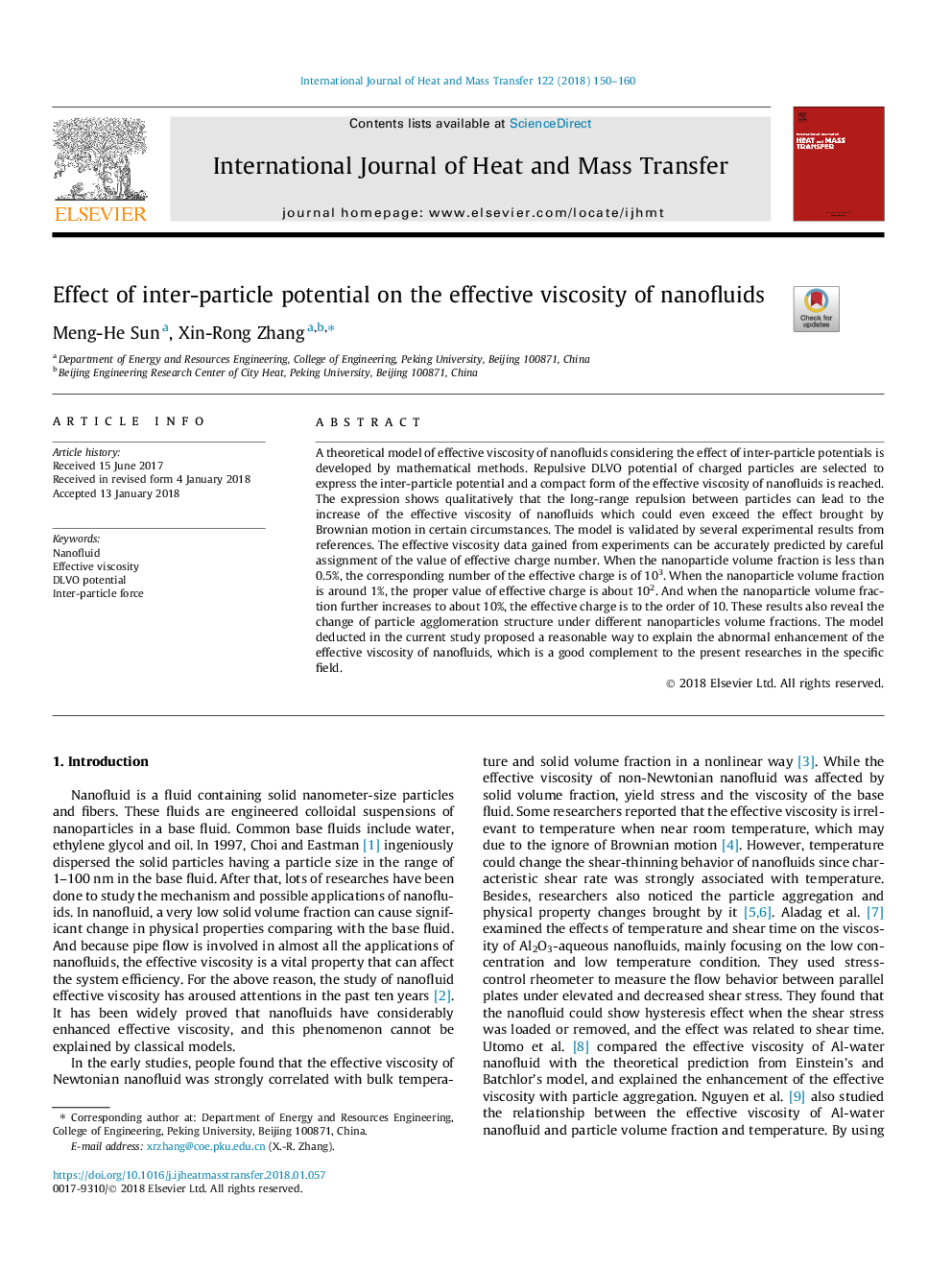| Article ID | Journal | Published Year | Pages | File Type |
|---|---|---|---|---|
| 7054343 | International Journal of Heat and Mass Transfer | 2018 | 11 Pages |
Abstract
A theoretical model of effective viscosity of nanofluids considering the effect of inter-particle potentials is developed by mathematical methods. Repulsive DLVO potential of charged particles are selected to express the inter-particle potential and a compact form of the effective viscosity of nanofluids is reached. The expression shows qualitatively that the long-range repulsion between particles can lead to the increase of the effective viscosity of nanofluids which could even exceed the effect brought by Brownian motion in certain circumstances. The model is validated by several experimental results from references. The effective viscosity data gained from experiments can be accurately predicted by careful assignment of the value of effective charge number. When the nanoparticle volume fraction is less than 0.5%, the corresponding number of the effective charge is of 103. When the nanoparticle volume fraction is around 1%, the proper value of effective charge is about 102. And when the nanoparticle volume fraction further increases to about 10%, the effective charge is to the order of 10. These results also reveal the change of particle agglomeration structure under different nanoparticles volume fractions. The model deducted in the current study proposed a reasonable way to explain the abnormal enhancement of the effective viscosity of nanofluids, which is a good complement to the present researches in the specific field.
Related Topics
Physical Sciences and Engineering
Chemical Engineering
Fluid Flow and Transfer Processes
Authors
Meng-He Sun, Xin-Rong Zhang,
